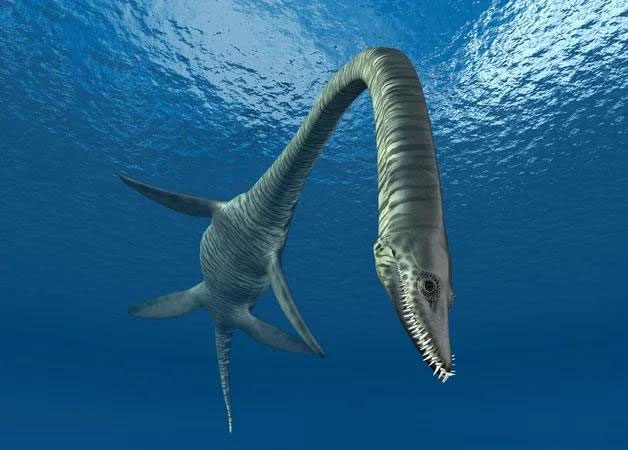New research indicates that the bizarre and unbelievable characteristics of fossilized plesiosaur skeletons have made them a source of fascination in the realm of oceanic monsters across three geological periods: the Triassic, Jurassic, and Cretaceous.
According to SciTech Daily, paleontologists from the University of Bristol (UK) have modeled the bodies of various marine creatures, including plesiosaurs, ichthyosaurs, extinct ancient whales, and modern whales and dolphins.
Among these, plesiosaurs stand out due to their unusual shapes; many of them are not just long-necked dinosaurs but resemble monstrous snakes attached to dinosaur-like bodies, with necks that can be several times longer than their torsos.

Portrait of the “perfectly shaped” plesiosaur Elasmosaurus – (Photo: SCITECH DAILY)
According to Dr. Susana Gutarra Díaz from the School of Earth Sciences at the University of Bristol and the Natural History Museum in London, the research team was particularly interested in the long necks and found that at the “optimal limit”—where the neck is about twice the length of the body—these ancient monsters would achieve minimal drag while swimming.
One of the plesiosaur lineages that exemplifies this “perfect ratio” is the Elasmosaurus, known for its famous 6-meter long neck, while its body measures only about 3 meters.
This bizarrely long neck has “upgraded” the plesiosaurs, explaining their terrifying swimming speed and highly accurate predatory capabilities, even though their total body weight could reach several tons.
Plesiosaurs are estimated to have emerged around 245 million years ago, during the Triassic period, and are considered “relatives” of dinosaurs, but they lived in water, with their four limbs evolved into flippers. Plesiosaurs thrived during the Jurassic period and continued to dominate through the Cretaceous until their extinction caused by the Chicxulub impactor, known as the “asteroid that killed the dinosaurs.”
This research was recently published in the scientific journal Communications Biology.




















































